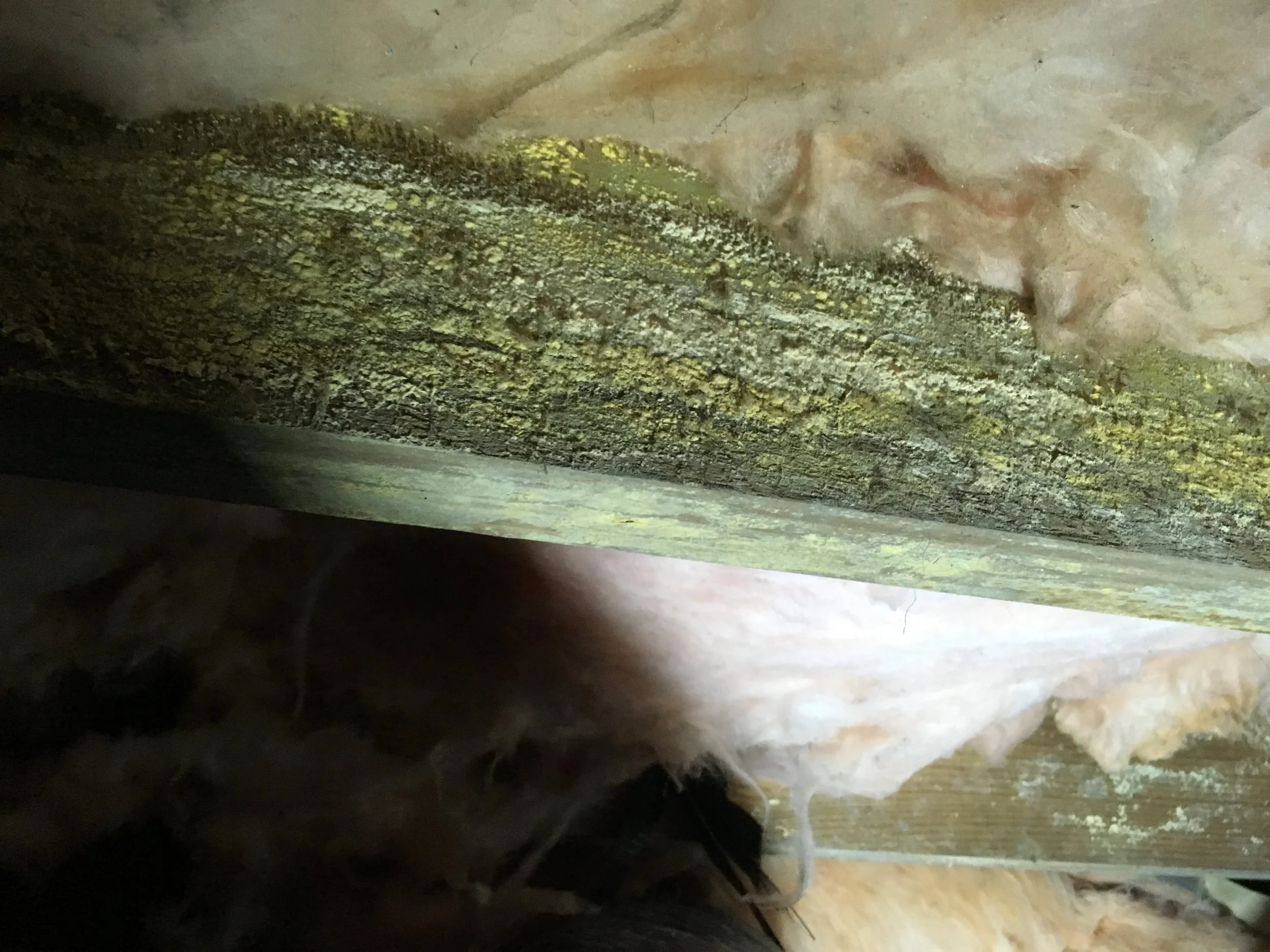Mold Remediation & Removal
Molds are found most everywhere and grow quickly on common building materials. Every person responds to molds differently. Excessive mold growing in your crawl space can result in symptoms of a "sick building". These "sick building syndrome" symptoms which include eye, nose, throat, and skin irritations as well as nonspecific hypersensitivity reactions of the body. In addition to human ailments, mold contamination poses potential great risks to the longevity of your home. Mold growth leads to potential dry rot, which is the deterioration of materials your house needs to remain standing.
Our certified Applied Microbial Remediation Technicians (AMRT) understand mold and can evaluate your crawl space to determine the best option for dealing with any mold in the crawl space. Depending on your particular mold situation and needs, we will coordinate options to meet your goals as well as your budget.
If there is only minor mold and you are not experiencing any mold related issue inside the home, the solution may be as simple as stopping future mold from developing. This is done my controlling moisture underneath your home. Because mold requires moisture to grow, once you eliminate moisture, mold can not develop any further.
If mold is minor or there are only limited concerns about the amount of mold, we may recommend a limited treatment to remove surface mold and reduce the mold under your home.
If mold growth is more pronounced, it may require removal and remediation. Our technicians follow the "Carolina Procedure" guidelines recommended for our area to first remove surface mold with a special HEPA filtered vacuum cleaner and then they apply a solution to discourage any future growth. Once this has been done it is important to still correctly address any moisture issues in the crawl space or mold will simply return.
Our technicians can provide options for dealing with the specific mold and moisture under your home.
Learn more. Knowledge is power.
Mold (a form of Fungi) that decays dead organic matter in nature such as cotton, fallen leaves and branches, leather, etc are known as Saprophytic molds. Without these molds our planet would not be able to break down and reuse materials to continue crating new life. Unfortunately for humans, commonly building homes from organic materials- these molds do not differentiate between the fallen log in the forest and a common 2x12 floor joist supporting our home.
WHEN DO WE TREAT FOR MOLD?
While in many other parts of the country homes are built on full Basements or directly on Concrete Slabs, across Central NC, the majority of homes have Vented Crawl Spaces. Nearly all homes with Vented Crawl Spaces will have mold either visible to the human eye or detectable with sampling equipment. Mold spores are ever-present in the world around us, floating on the wind. Do we always have to spray chemicals and kill this mold? Absolutely not!
Homes that are at high risk for mold induced Dry Rot, with visible mold growth should certainly be evaluated by our trained professionals to determine the severity of your condition. Dry rot can begin taking its toll as the moisture content of the material rises above 16% (give or take depending on the specific conditions). Using a moisture meter we can immediately determine the moisture content of your materials. You can even do this yourself for relatively cheap!
Light Mold growth on floor joist. Does this really NEED treatment?
Heavier Mold growth beginning to cause decay of wood. "Houston, we have a problem."
COMMON TYPES OF MOLD FOUND IN BUILDING MATERIALS
Penicillium, Aspergillus, Cladosporium, Stachybotrys
SO WHAT DO WE DO TO PROTECT OUR HOMES?
Mold has three basic requirements for life.
MOLD = AIR + FOOD + WATER
1. Air- Unlikely to remove this from the equation
2. Organic material to consume- Your home is built with untreated lumber
3. Moisture- WE CAN CONTROL THIS CONDITION!
THERE ARE SEVERAL OPTIONS TO REDUCE MOISTURE UNDER YOUR HOME.
Installing a Vapor Barrier is a critical step in reducing moisture from moving between the soil and your home. While this does not stop moisture from coming in from the vents in your crawl space, a vapor barrier will stop ground moisture from entering your crawl space.
Depending on your crawl space conditions we may recommend a regular or sealed vapor barrier.
Example of a 12MM SEALED vapor barrier
Dehumidification is another fantastic option. By installing a specialized Crawl Space Dehumidifier you can set the moisture level and live worry free. In choosing to use a dehumidifier it is important to close or permanently seal the vents on your crawl space in order to only control the air under your home- not the outside world.
Just one option for Dehumidifier
Encapsulation of the crawl space changes the "envelope" of your home to incorporate the crawl into a conditioned zone of your house. The air under your home will be the same as the air in the living zones of your house, with a few options on how to mechanically control the moisture levels. While this is certainly the most costly of options, most high end residential construction has now shifted to the Encapsulated Crawl design. Many homes have gas fired furnaces and water heaters located under the home, requiring not only a direct exhaust for the gas fumes but also a dedicated air intake for proper combustion of the appliance.







